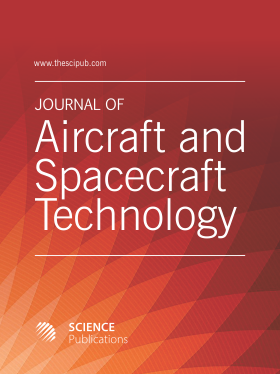The TESS Satellite will Search for Planets in the Vicinity of our Solar System
- 1 Bucharest Polytechnic University, Romania
Abstract
The US Space Agency has launched from Cape Canaveral, Florida, the TESS satellite, which will search for planets near our solar system and study them in detail. "TESS will significantly increase the number of planets studied," said George Ricker of the Massachusetts Institute of Technology, MIT, before launching. "It will double the number of planets we've seen and detected with the Kepler telescope," he added. The Kepler Space Observatory has discovered 2,650, about 70% of the total worlds outside the solar system that is known to mankind. TESS was launched with a Falcon 9 rocket, which returned to Earth after sending the satellite to the Earth's orbit. The telescope used by NASA to "hunt" the planets led to the discovery of two heavenly bodies that seem to be ideal places for life. The two planets have the ideal dimensions and are at the right distance from their star. William Borucki, the Kepler telescope scientist, has announced that these two planets are the best candidates identified so far in the race to discover planets that host life. The findings were published in the journal Science. Experts announce that these two planets are an important milestone in the race for identifying extraterrestrial life. In the past, when astronomers identified exoplanets (planets outside our solar system) they did not meet all the criteria necessary to accommodate life forms. Many planets are not in the habitable area - at a distance from their star so they are not too hot or too cold, but ideal for the existence of liquid water. Until now, all the planets identified inhabitable areas were too large. Most likely, these planets were huge gas balls, like Neptune, not suitable for life. Instead, the Earth-sized planets discovered so far have been at a distance unsuitable for their stars. The two planets now identified by the researchers, Kepler-62-e and Kepler-62-f, meets all the necessary conditions for hosting life. The two planets are twin - they orbit the same star and are next to each other, less than Earth and Mars. Planets are a bit wider than Terra, but they are not too big. Kepler-62-e is a warm Hawaiian planet and Kepler-62-f is cool like Alaska, Borucki explained. Researcher David Charbonneau of Harvard University, co-author of this study, says, "It's the first planet I really think of," he said, "but Kepler-62-f may be able to host life forms." The researcher added that "we have overcome an important barrier. So, why not have life forms?" The planets are 1,200 light-years away from Terra. The star that it orbits dates back 7 billion years ago, being 2.5 billion years older than our Sun.
DOI: https://doi.org/10.3844/jastsp.2019.107.118

- 5,283 Views
- 2,503 Downloads
- 0 Citations
Download
Keywords
- TESS
- NASA
- Kepler
- Space Observatory
- Exoplanets
- Near our Solar System
